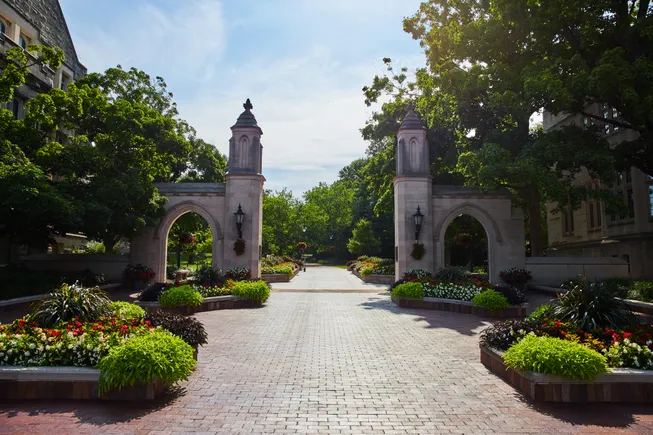
by Robert A. Scott

Iconic Prototype/ Shutterstock
Introduction
Modern American colleges and universities fulfill three critical roles: 1) Curator of the pastsociety’s memory, whether recorded in ink, clay, brass, or electronic databases; 2) Creator of the newwhether from a microscope slide or a synthesis of theories on social phenomena, or professionals and citizens, and 3) Critic of the status quostanding at the periphery of society, asking questions related to fair treatment, justice, equality, and “What if?” or “Why not?”
The responsibility for governing this unique institution is invested in a board of trustees. As I state in my book “How University Boards Work,” because fewer than 15% of American college and university trustees have any professional experience in higher education, it is critical to orient them to the foundational principles of advanced learning, in general, and the campus mission in particular. Advanced education is dedicated to the search for truth and to the preparation of students to distinguish between empirical evidence, epiphanies, and emotion or superstition. Its role is as much about character and citizenship advancement as it is about preparation for careers and commerce.
I know higher education well enough to admire it; I care deeply enough to know its problems; and I believe in its potential for a positive future. While there is much to lament, I think there is reason to believe in the idealism that has fueled the desire for learning in groups over the millennia, and in a concomitant commitment to relevance, which has been the essence of the American higher education journey.
What I Admire
The goals of higher education have been to widen access, especially at the undergraduate level, for students of all ages and backgrounds, whether enrolled full-time or part-time. University graduates, no matter what their socio-economic origins, have lower unemployment rates and higher incomes, commit fewer crimes, and have a greater likelihood of civic participation.
The goal is to transform students into inquisitive, articulate, active, ethical citizens who can consider sophisticated levels of abstraction and distinguish conclusions from premises and the universal from the specific. It is not simply to engage them in a series of transactions as if education were a commodity: select the correct answer and we will grant you a credit or a certificate.
Colleges are “anchor” institutions in their communities, providing “products” and services of which everyone can be proud, employing a highly educated workforce often engaged in the community, generating payroll and other taxes, and likely to be more sensitive to the environment than is typical. One can also add the numerous cultural contributions of college campuses, including music, theatre, dance, painting, sculpture, speakers, and sports, as well as children’s programs.
These and many other features are what I admire about higher education. It is the historic focus on expansion of opportunity, the multiplicity of institutional types, the commitment to high quality and rigorous debate, the governmental policies supporting higher education for a public purpose, and private philanthropy with a commitment to the advancement of the citizenry. It is the various institutional missions designed to serve the growing nation that helped make higher education in the U.S. the gem that it is in so many ways, but not all.
What Causes Me Anguish?
The visions described above have not been fulfilled as fully as possible. In the United States, as elsewhere, the original sin of slavery, a product of public policy, denied African Americans access to higher education. It was not until the second Morrill Act of 1890 that opportunities began to grow, with federal appropriations to support colleges in the 17 slave states that continued to exclude these students from the original Land Grant institutions.
Given my belief that higher education is an instrument for democracy, one feature that concerns me is the limited commitment to access for talented students who come from less-advantaged backgrounds. The federal Pell Grant program was designed to provide tuition assistance to families at the median household income or lower, but funding lags.
Another feature that causes concern is student loan debt. In 2007, following reductions in the use of direct lending and cutbacks to the federal program, banks and other non-bank lenders began offering variable rate loans with risk pricing. Some interest rates were up to 16 percent and more. A significant portion of debt was incurred by students enrolled in medical and law schools.
It was a combination of these loans, the dramatic increase in students attending private, for-profit colleges using federal and private loans, and the fact that the federal government did not reduce interest rates to the prevailing commercial rates, that caused a surge in total student debt which is reported to exceed $1.7 trillion.
Still another concern is graduation rates. Of 100 new college students, only 65 will graduate with a four-year baccalaureate degree in six years. The four-year rate is 49%.
There is more to be said about what causes concern, especially about government intrusions and the roles of trustees and faculty in what is called “shared governance”. Related issues are student disciplinary practices, tuition discounting, loan defaults, and diversity programs that seem to discriminate, the undue influence of some donors, the rising use and abuse of artificial intelligence (AI), and failure to respond to changing workforce needs.
We in higher education need to work together, as well as individually, on restoring trust and confidence in colleges and universities by demonstrating greater accountability, transparency, student success, and community engagement.
Conclusion
Boards of trustees can rebuild trust and credibility, especially if they engage in rigorous strategic planning and practice transparency in approving priorities, adopting a budget, and setting tuition consistent with the campus mission and strategic plan. Trust and credibility may also be advanced by educating the public about the benefits of higher education to society as well as to individuals.
I believe that we can reclaim a culture of conscience and civic responsibility, provide education for a purposeful life, and offer a university education that is as much about these goals as it is about jobs and economic-technological developments.








